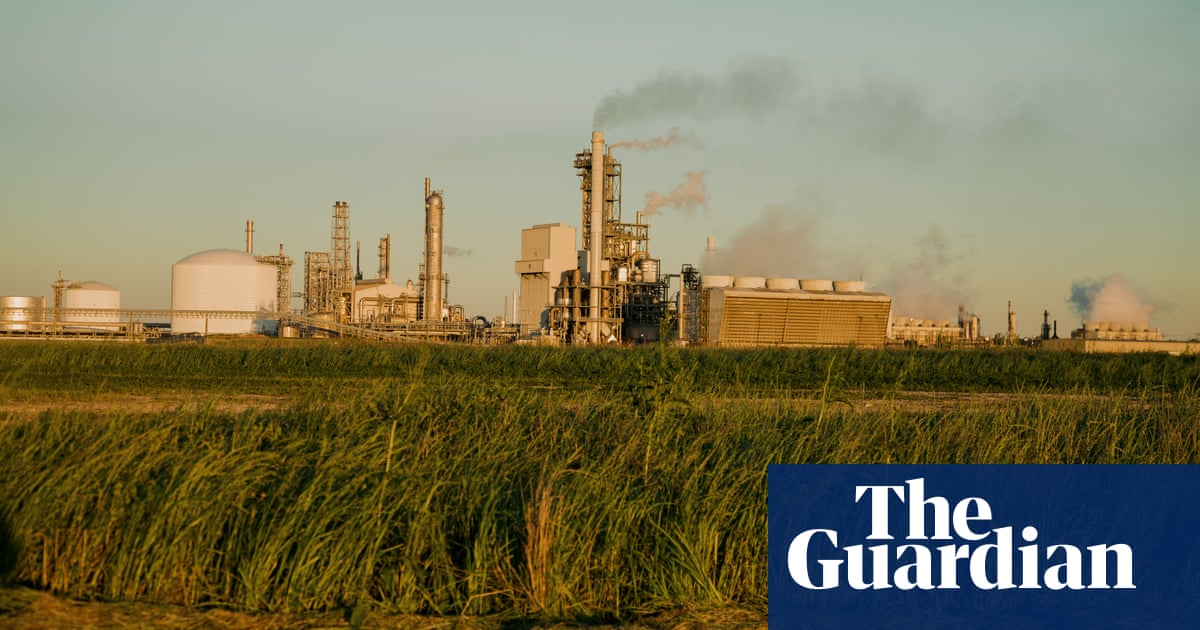Air in Louisiana’s ‘Cancer Alley’ likely more toxic than previously thought


The Air in Louisiana’s “Cancer Alley” Poses High Risk of Carcinogenic Gas Exposure

Introduction
New research reveals that the air in south-east Louisiana’s “Cancer Alley” is likely contaminated with a highly carcinogenic gas, ethylene oxide, at levels much higher than previously estimated. This article highlights the significant health risks posed by this exposure and emphasizes the importance of addressing these issues in line with the Sustainable Development Goals (SDGs).
High Levels of Ethylene Oxide Detected
Using advanced equipment to accurately measure the gas, researchers discovered levels of ethylene oxide more than 1,000 times higher than previous measurements. On average, the levels were about 10 times higher than what regulators had estimated. These findings are particularly concerning for the residents and workers in the region, especially children, as they face a higher risk of exposure. It is worth noting that the majority of residents in the area are lower-income and African American.
Implications for Health and Sustainable Development Goals
Ethylene oxide is known to be linked to various cancers, DNA damage, lung injury, and other serious health issues. Its usage in plastic production and fumigation processes makes it a significant concern in Louisiana, which houses numerous chemical facilities. The inhalation of ethylene oxide is the most common exposure route, and even low levels of exposure pose a cancer risk. These findings highlight the urgent need to address air pollution and protect public health, aligning with SDG 3 (Good Health and Well-being) and SDG 11 (Sustainable Cities and Communities).
Challenges in Accurate Measurement
Accurately measuring ethylene oxide levels is crucial due to its potency even at extremely low concentrations. The Environmental Protection Agency (EPA) collects air samples from emitting facilities but faces challenges in measuring the true volume of the gas due to its rapid changes once in a sampling container. To overcome this, researchers conducted real-time testing during a month-long study, driving through heavily industrialized areas along the Mississippi River between New Orleans and Baton Rouge.
Extent of Exposure and Potential Sources
The study revealed plumes of ethylene oxide emissions up to seven miles long, indicating that the gas remains concentrated enough at that distance to pose a health threat. This finding is particularly concerning for East Ascension High School, located approximately five miles from one of the identified ethylene oxide hotspots. The exact sources of these emissions remain unclear, whether they originate from stacks or escape as fugitive emissions through piping or equipment within the plants.
Industry Response and Additional Chemical Exposures
The Louisiana Chemical Association (LCA) disputed the study’s findings, questioning its methodology. However, the researchers highlighted that ethylene oxide is just one of many chemicals to which people in the area are exposed. The cumulative effect of these exposures further compounds the health risks faced by the community. Addressing these concerns aligns with SDG 12 (Responsible Consumption and Production) and SDG 13 (Climate Action).
Conclusion
The alarming levels of ethylene oxide detected in south-east Louisiana’s “Cancer Alley” underscore the urgent need for action to protect public health and achieve the SDGs. Efforts to reduce air pollution, regulate emissions, and ensure environmental justice for affected communities are essential steps towards creating sustainable and healthy environments for all.
SDGs, Targets, and Indicators
| SDGs | Targets | Indicators |
|---|---|---|
| SDG 3: Good Health and Well-being | 3.9: By 2030, substantially reduce the number of deaths and illnesses from hazardous chemicals and air, water, and soil pollution and contamination | Indicator not mentioned in the article |
| SDG 10: Reduced Inequalities | 10.2: By 2030, empower and promote the social, economic, and political inclusion of all, irrespective of age, sex, disability, race, ethnicity, origin, religion, or economic or other status | Indicator not mentioned in the article |
| SDG 11: Sustainable Cities and Communities | 11.6: By 2030, reduce the adverse per capita environmental impact of cities, including by paying special attention to air quality and municipal and other waste management | Indicator not mentioned in the article |
| SDG 12: Responsible Consumption and Production | 12.4: By 2020, achieve the environmentally sound management of chemicals and all wastes throughout their life cycle, in accordance with agreed international frameworks, and significantly reduce their release to air, water, and soil to minimize their adverse impacts on human health and the environment | Indicator not mentioned in the article |
| SDG 13: Climate Action | 13.3: Improve education, awareness-raising, and human and institutional capacity on climate change mitigation, adaptation, impact reduction, and early warning | Indicator not mentioned in the article |
| SDG 16: Peace, Justice, and Strong Institutions | 16.7: Ensure responsive, inclusive, participatory, and representative decision-making at all levels | Indicator not mentioned in the article |
1. Which SDGs are addressed or connected to the issues highlighted in the article?
- SDG 3: Good Health and Well-being
- SDG 10: Reduced Inequalities
- SDG 11: Sustainable Cities and Communities
- SDG 12: Responsible Consumption and Production
- SDG 13: Climate Action
- SDG 16: Peace, Justice, and Strong Institutions
2. What specific targets under those SDGs can be identified based on the article’s content?
- Target 3.9: By 2030, substantially reduce the number of deaths and illnesses from hazardous chemicals and air, water, and soil pollution and contamination
- Target 10.2: By 2030, empower and promote the social, economic, and political inclusion of all, irrespective of age, sex, disability, race, ethnicity, origin, religion, or economic or other status
- Target 11.6: By 2030, reduce the adverse per capita environmental impact of cities, including by paying special attention to air quality and municipal and other waste management
- Target 12.4: By 2020, achieve the environmentally sound management of chemicals and all wastes throughout their life cycle, in accordance with agreed international frameworks, and significantly reduce their release to air, water, and soil to minimize their adverse impacts on human health and the environment
- Target 13.3: Improve education, awareness-raising, and human and institutional capacity on climate change mitigation, adaptation, impact reduction, and early warning
- Target 16.7: Ensure responsive, inclusive, participatory, and representative decision-making at all levels
3. Are there any indicators mentioned or implied in the article that can be used to measure progress towards the identified targets?
No indicators are mentioned or implied in the article that can be used to measure progress towards the identified targets.
Source: theguardian.com








